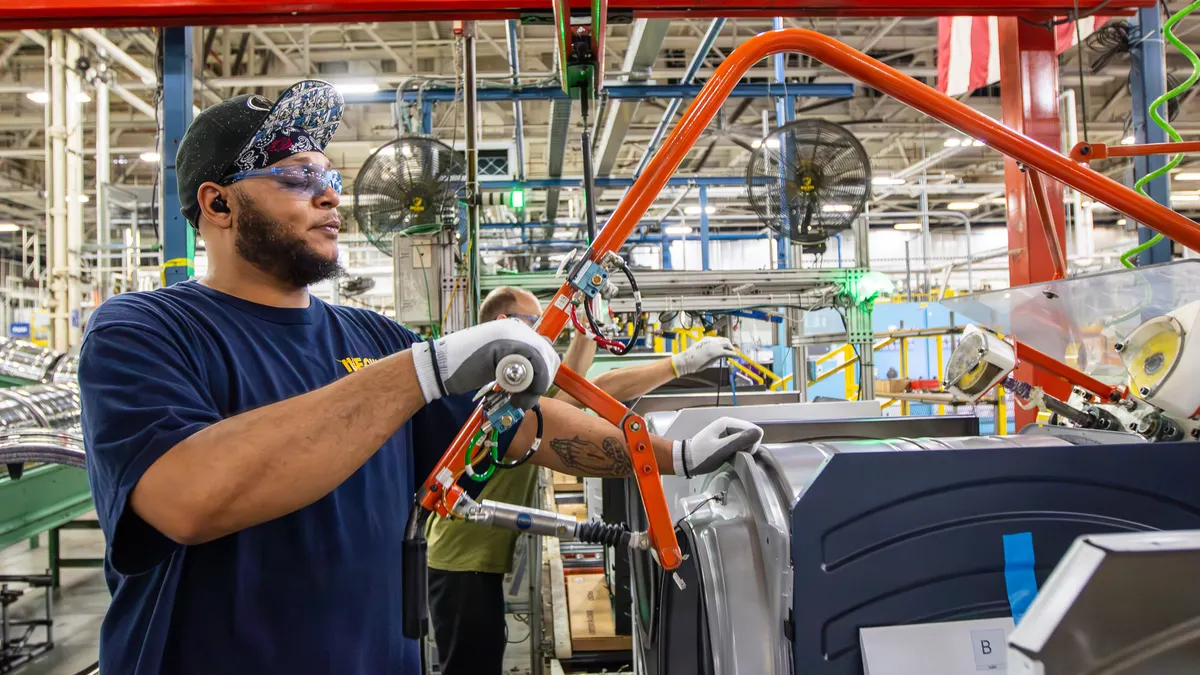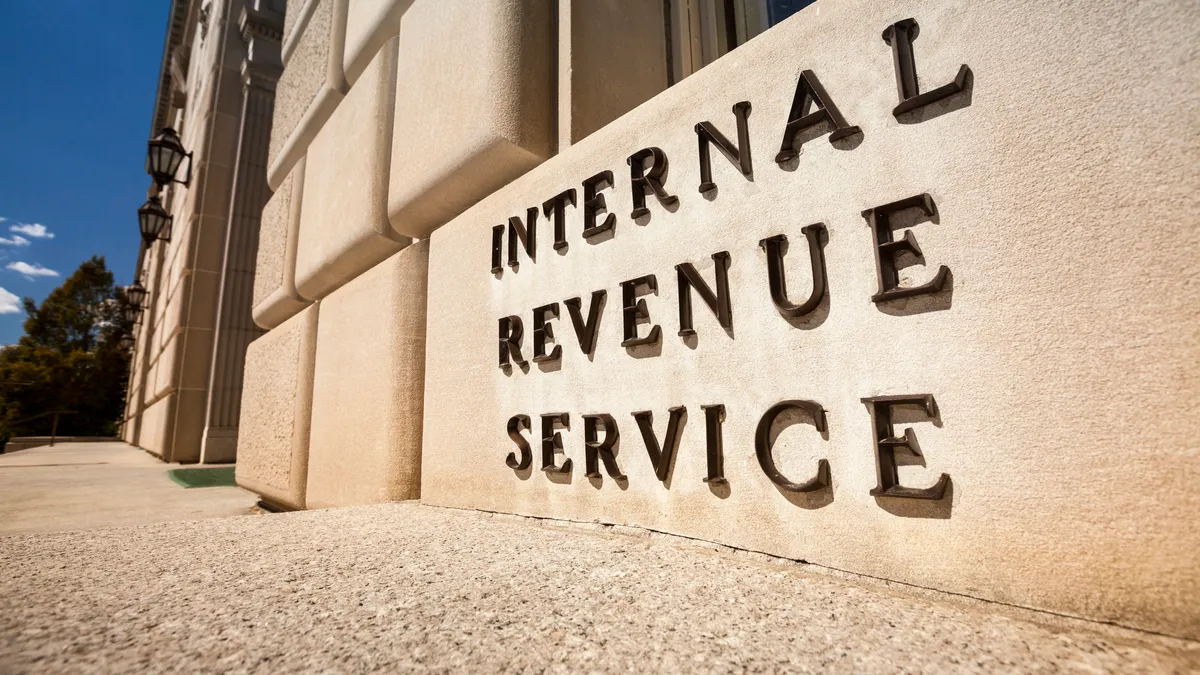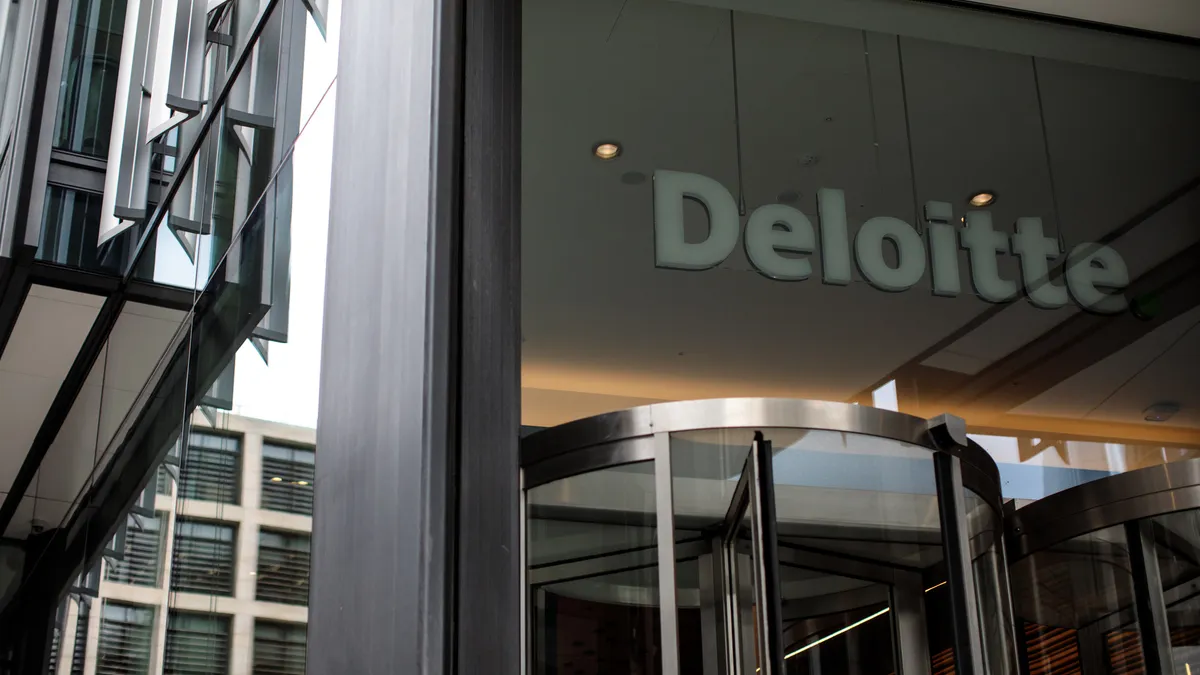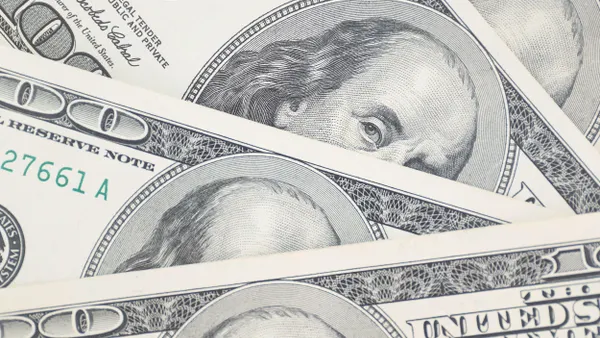Dive Brief:
- Unemployment will likely rise to 4.5% next year after U.S. hiring slows to a monthly average of 23,000 during the current quarter from 55,000 during the second quarter, the National Association for Business Economics said Monday, citing a survey.
- Expectations for the labor market have “softened from those in the October 2025 survey,” KPMG Senior Economist Yalena Maleyev said in a statement, referring to the economists’ estimates. “The dispersion of job-growth forecasts is unusually wide, underscoring elevated uncertainty about labor demand,” according to Maleyev, chair of the NABE survey.
- Meanwhile, inflation will cool a bit but remain stuck well above the Federal Reserve’s 2% goal through next year, NABE said, describing median estimates from a survey of 42 forecasters. The personal consumption expenditures price index excluding volatile food and energy prices, the central bank’s preferred measure of price pressures, will likely increase 2.6% next year, the NABE said.
Dive Insight:
While forecasting a mix of rising unemployment with above-target but steady inflation, most forecasters predict that the central bank will trim the federal funds rate by a quarter percentage point to a range between 3.5% to 3.75% at a Dec. 9-10 policy meeting, the NABE said. They expect a total of 0.5 percentage point in reductions in the main rate next year.
Fed policymakers differ over the best path for interest rates, with one camp calling for reductions in the federal funds rate to firm up a softening labor market and the other voicing caution that further easing will spur inflation.
Participants at a Fed policy meeting last month, “expressed strongly differing views about what policy decision would most likely be appropriate at the committee’s December meeting,” according to minutes of the meeting released Wednesday.
While divided, most Fed officials have said they are waiting for additional data before making their decision.
“I still see room for a further adjustment in the near term to the target range for the federal funds rate to move the stance of policy closer to the range of neutral, thereby maintaining the balance between the achievement of our two goals,” New York Fed President John Williams said Friday in a speech, referring to the Fed mandate to ensure maximum employment and price stability.
Still, Williams said his “policy views will, as always, be based on the evolution of the totality of the data, the economic outlook, and the balance of risks to the achievement of our maximum employment and price stability goals.”
Economists in their median forecast marked up their forecast for average real gross domestic product growth next year to 1.8% from 1.7% in October, the NABE said.
The highest U.S. import taxes since the 1930s will likely shave 0.5 percentage points from real GDP growth next year, according to 64% of the forecasters. Thirty-three percent expect that tariffs will slow growth by more than 0.5 percentage points, the NABE said.
Roughly two-thirds of the economists expect import duties to push up headline PCE inflation by a range of 0.25 percentage point to 0.749 percentage point, according to the NABE.
“None of the panelists surveyed chose the option that tariffs actually have a downward impact on inflation,” Conference Board Senior U.S. Economist Yelena Shulyatyeva said Monday during an NABE webcast.
Nearly one out of three respondents (30%) said “that the risks associated with tariffs are the single most significant negative factor for the economy, followed by 18% who cite persistently high inflation,” the NABE said.












